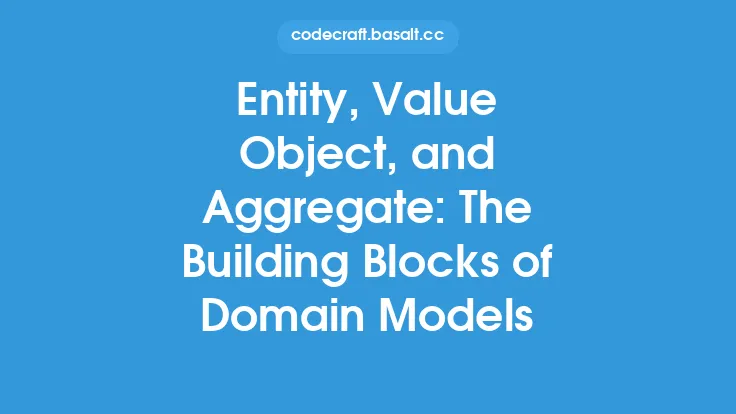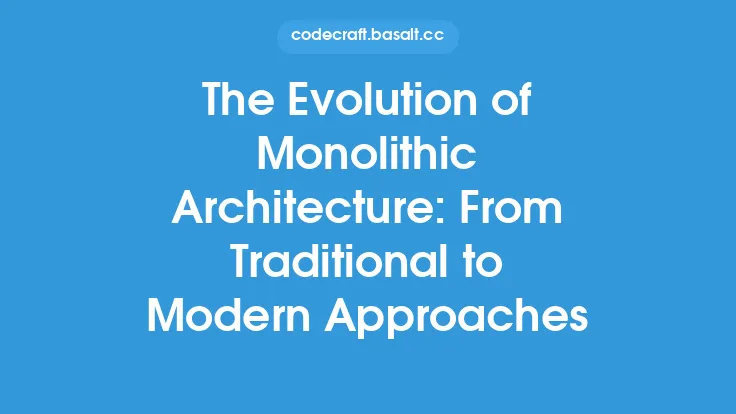Domain modeling is a crucial aspect of software architecture that involves creating a conceptual representation of the problem domain, which is the area of expertise or the business domain that the software aims to address. It is a fundamental step in the software development process, as it helps to ensure that the software system is aligned with the business needs and goals. In this article, we will delve into the world of domain modeling, exploring its importance, key concepts, and best practices.
Introduction to Domain Modeling
Domain modeling is a process of creating a conceptual model of the problem domain, which involves identifying the key concepts, relationships, and rules that govern the domain. This model serves as a foundation for the software architecture, ensuring that the system is designed to meet the business requirements and is flexible enough to adapt to changing needs. A well-crafted domain model helps to reduce the complexity of the software system, making it easier to maintain, extend, and evolve over time.
Key Concepts in Domain Modeling
There are several key concepts that are essential to domain modeling, including entities, value objects, and relationships. Entities are objects that have a unique identity and exist independently, such as customers, orders, or products. Value objects, on the other hand, are objects that have a set of values but no identity, such as money, dates, or addresses. Relationships between entities and value objects are also crucial, as they define how the different components of the domain interact with each other.
The Importance of Abstraction in Domain Modeling
Abstraction is a critical aspect of domain modeling, as it allows developers to focus on the essential features and behaviors of the domain while ignoring irrelevant details. Abstraction helps to reduce the complexity of the domain model, making it easier to understand and communicate. By abstracting away from the implementation details, developers can create a domain model that is platform-independent and can be implemented using a variety of technologies.
Domain Modeling Techniques
There are several techniques that can be used to create a domain model, including brainstorming, mind mapping, and entity-relationship modeling. Brainstorming involves gathering a group of stakeholders and domain experts to identify the key concepts and relationships in the domain. Mind mapping is a visual technique that uses diagrams to represent the domain model, while entity-relationship modeling is a more formal approach that uses entities, attributes, and relationships to define the domain model.
The Role of Domain Experts in Domain Modeling
Domain experts play a crucial role in domain modeling, as they provide the knowledge and insight needed to create an accurate and comprehensive domain model. Domain experts are individuals who have a deep understanding of the problem domain and can provide valuable feedback and guidance throughout the domain modeling process. By involving domain experts in the domain modeling process, developers can ensure that the software system is aligned with the business needs and goals.
Best Practices for Domain Modeling
There are several best practices that can be followed to ensure that the domain model is effective and maintainable. These include keeping the domain model simple and focused, using ubiquitous language, and avoiding technical jargon. The domain model should also be flexible and adaptable, allowing for changes and evolution over time. By following these best practices, developers can create a domain model that is robust, scalable, and maintainable.
Common Pitfalls in Domain Modeling
There are several common pitfalls that can occur in domain modeling, including over-engineering, under-engineering, and misinterpreting the domain. Over-engineering occurs when the domain model is too complex and detailed, while under-engineering occurs when the domain model is too simplistic and lacks essential features. Misinterpreting the domain can occur when the domain model does not accurately reflect the business needs and goals. By being aware of these common pitfalls, developers can take steps to avoid them and create a domain model that is effective and maintainable.
Conclusion
In conclusion, domain modeling is a critical aspect of software architecture that involves creating a conceptual representation of the problem domain. By understanding the key concepts, techniques, and best practices of domain modeling, developers can create a domain model that is robust, scalable, and maintainable. A well-crafted domain model helps to reduce the complexity of the software system, making it easier to maintain, extend, and evolve over time. By following the principles and best practices outlined in this article, developers can create software systems that are aligned with the business needs and goals, and that provide long-term value to the organization.





